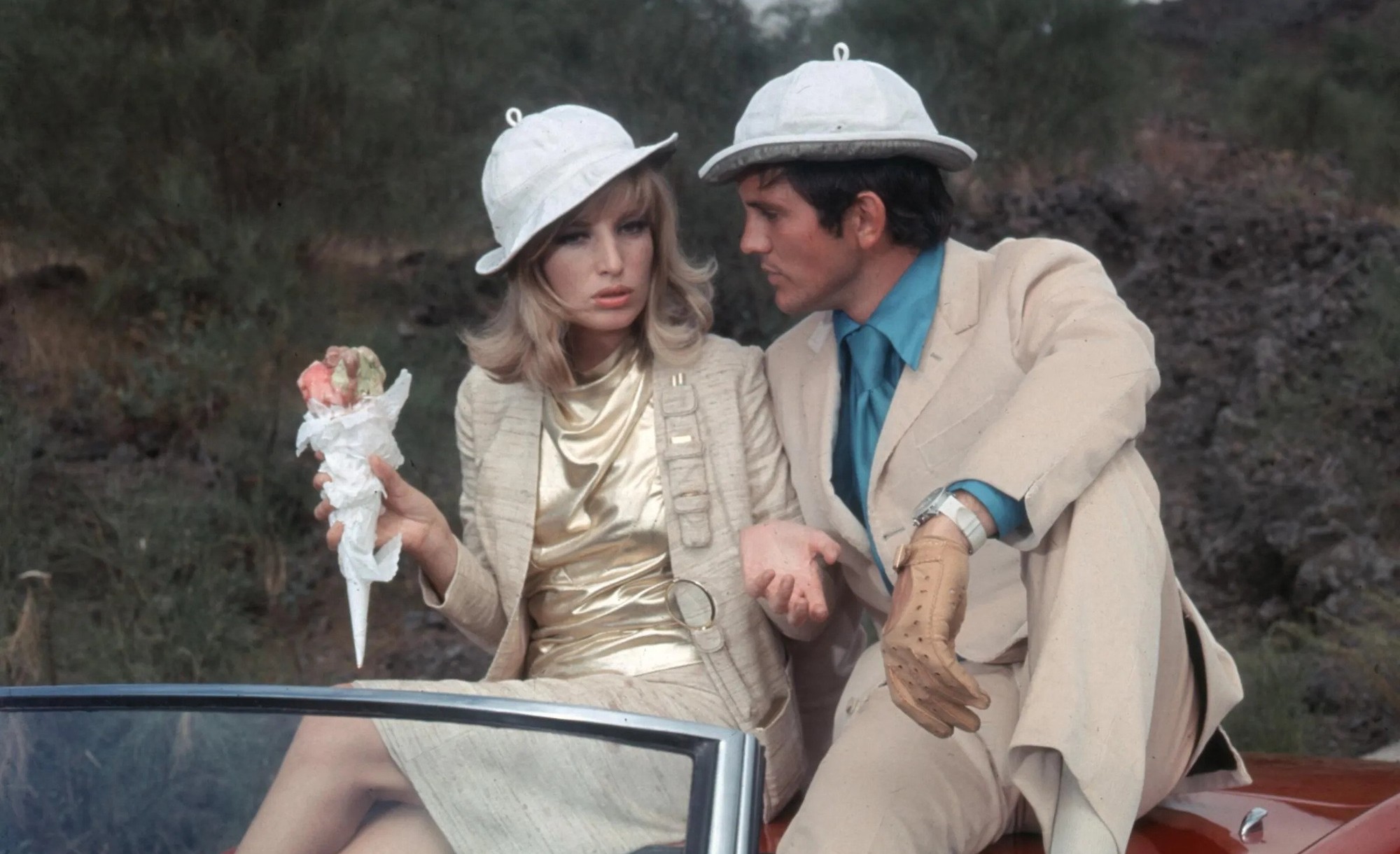Modesty Blaise was created by writer Peter O’Donnell and artist Jim Holdaway in 1963. It follows Modesty as she runs a crime syndicate, called the Network, and then later, as she uses her considerable talents and intelligence to help a wide range of friends and sometimes enemies, usually while accompanied by her platonic life partner, Willie Garvin.
While the strip’s art changed hands a few times, Enrique Badía Romero was the artist for the majority of its run until it ended in 2002. O’Donnell also wrote 11 Modesty Blaise novels as well as two short story collections. So basically, if you like Modesty Blaise, which you will, you’re in luck because there is a lot of it.

Sadly, the reprint collections of the earliest strips are very much out of print currently. The collections I cover from the late 1980s to the 1990s but it’s not a strip that really lost its appeal. Although O’Donnell did update some the technology and such, it always feels a bit stuck in the 1960s in a good way. Modesty is always in her mid-20s and, likewise, Willie never ages.
The strip is smart, sexy and so much fun. Modesty and Willie’s deep friendship is one of my favorites — they’re affectionate and playful with each other but also know each other so well. I love that O’Donnell never turned them into a romantic couple. They’re better together without that.
I mostly only know Romero’s art, but he has such a good command of the material. Modesty is always beautiful and in control and while she’s sometimes topless or in her underwear, it never feels exploitative. Also, both he and O’Donnell also find opportunities to have Willie have his shirt off, so I appreciate that. Romero also has such a good eye for fashion — Modesty is quite stylish, as she should be.
Modesty Blaise, with all of its intrigue and action, far-flung locales, and attractive, seductive characters, should have been such an easy transition to film. Everything you need is already right there!
That’s not what happened, though.
Modesty Blaise (1966, directed by Joseph Losey) is fun enough if you pretend it’s not related to the comic strip, other than the name and the general concept. It’s still not entirely successful on its own but that makes it less disappointing. And that’s “less disappointing.” It’s still a disappointing movie overall.

There are a few things it gets right. I like Terence Stamp as Willie and while Monica Vitti isn’t quite right as Modesty, she has great, appealing charm as our heroine. The plot involves the transfer of some diamonds to a Middle Eastern kingdom that has also attracted the attention of criminal mastermind Gabriel (Dirk Bogarde) and while that’s familiar enough, it’s fun for this kind of movie.
I don’t even know if I object to the tone being lighter — Modesty Blaise is a fun strip, after all — but Losey’s decision to turn this into a surrealist comedy doesn’t work.
I like the pop art touches and how colorful this movie is, certainly, and Vitti is dressed in some great clothes. I will even forgive that’s she’s a blonde for most of the movie (Modesty is always a brunette in the comic). The weird, winking attitude of “ha ha, this is a comic strip!” can sometimes work, but the jokes about a character not understanding how Modesty was able to put on her black catsuit since it doesn’t seem to have a zipper fall flat. And on its own, I don’t even mind how Modesty keeps showing up in different scenes wearing different colors of the same dress when she would have not had a chance to change, because, fine, that’s funny. But just not in a Modesty Blaise movie.
It is also oddly violent in places. There is nothing too graphic onscreen but watching a woman die on the street after being stabbed feels out of place with random musical numbers. (Its treatment of people from the Middle East is very much dated, and Gabriel’s effeminate campiness is not funny.)
I definitely think there was room to make a Modesty Blaise movie that was self-aware and wanted to play with the conventions of spy/heist thrillers. This just felt like, in the end, it was making fun of the comic strip, which did not deserve that at all.
After all, having Modesty and Willie decide they’re actually in love and want to be a romantic couple, though, is unforgivable. Out of all the choices this movie makes, that’s the worst one because it feels like it’s defiantly going against the spirit of the comic. It’s not a great movie but it’s made worse by its failure as an adaptation.
There have been several more attempts to get Modesty Blaise onto screens. There was a 1982 TV pilot starring Ann Turkel that aired on ABC but the series wasn’t picked up. Quentin Tarantino spent many years trying to get a Modesty Blaise movie produced without luck and Neil Gaiman was writing a script based on the novel I, Lucifer.
The most recent adaptation, My Name is Modesty was released straight to video in 2004. It was directed by Scott Spiegel and stars Alexandra Staden in the lead role.
Interest in Modesty Blaise still seems to be out there and I do see a huge opportunity for it. But in the meantime, read some of the comic strips and the novels.
I will be writing about My Name is Modesty and the 1982 pilot on my Patreon later this week.

